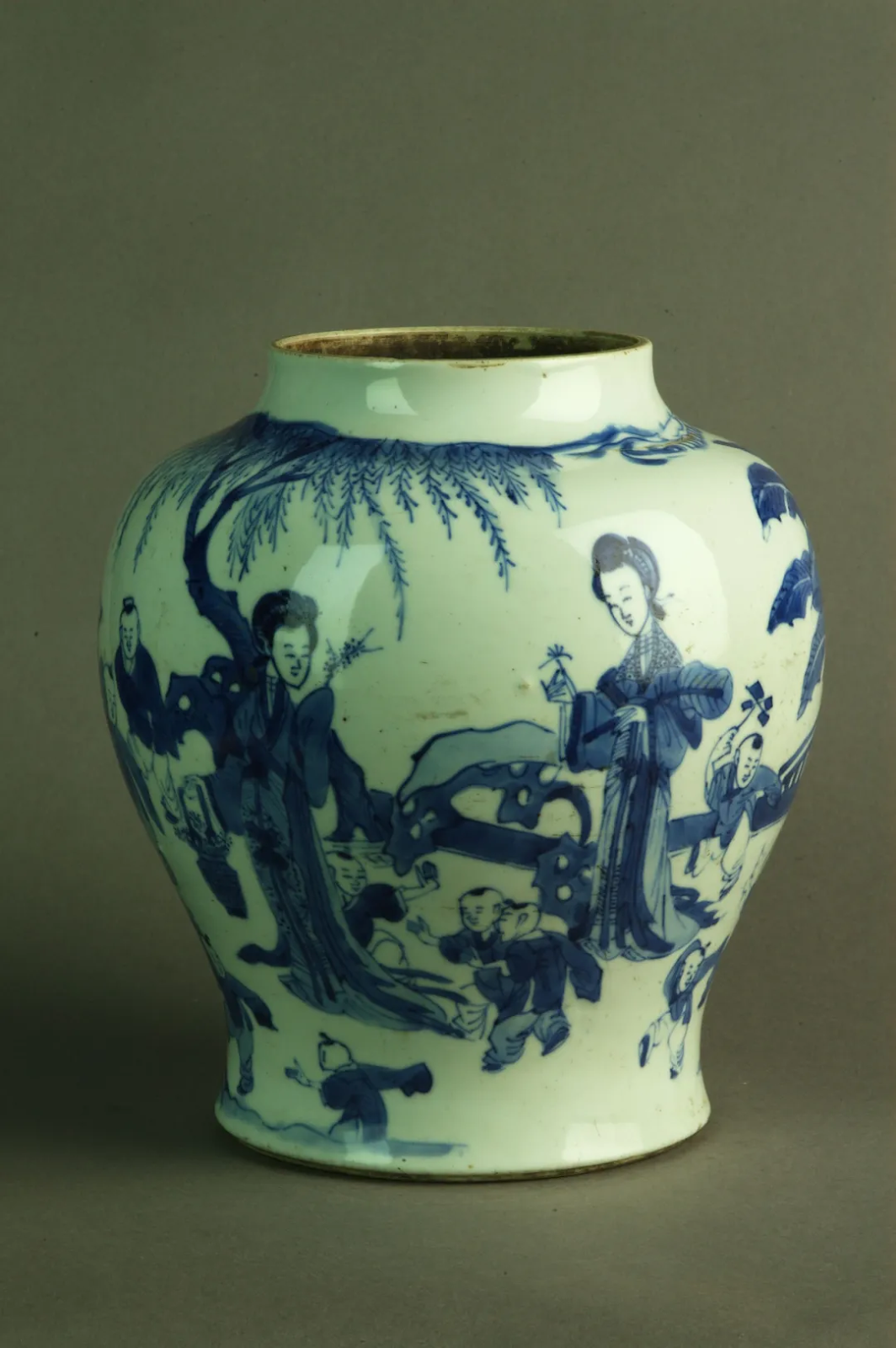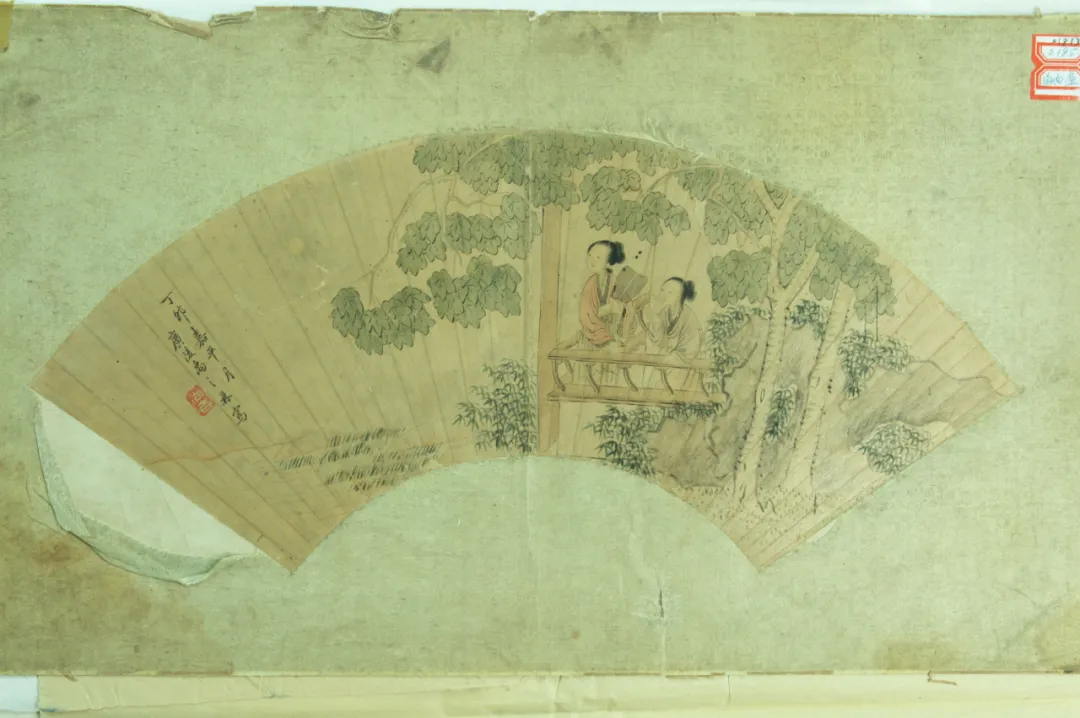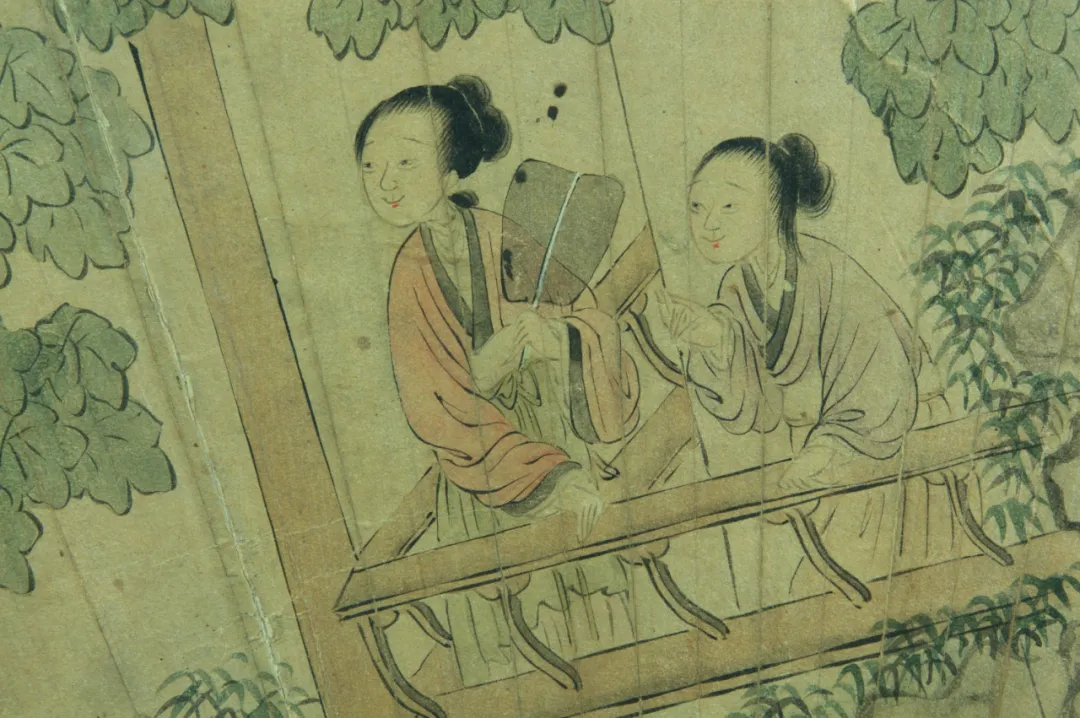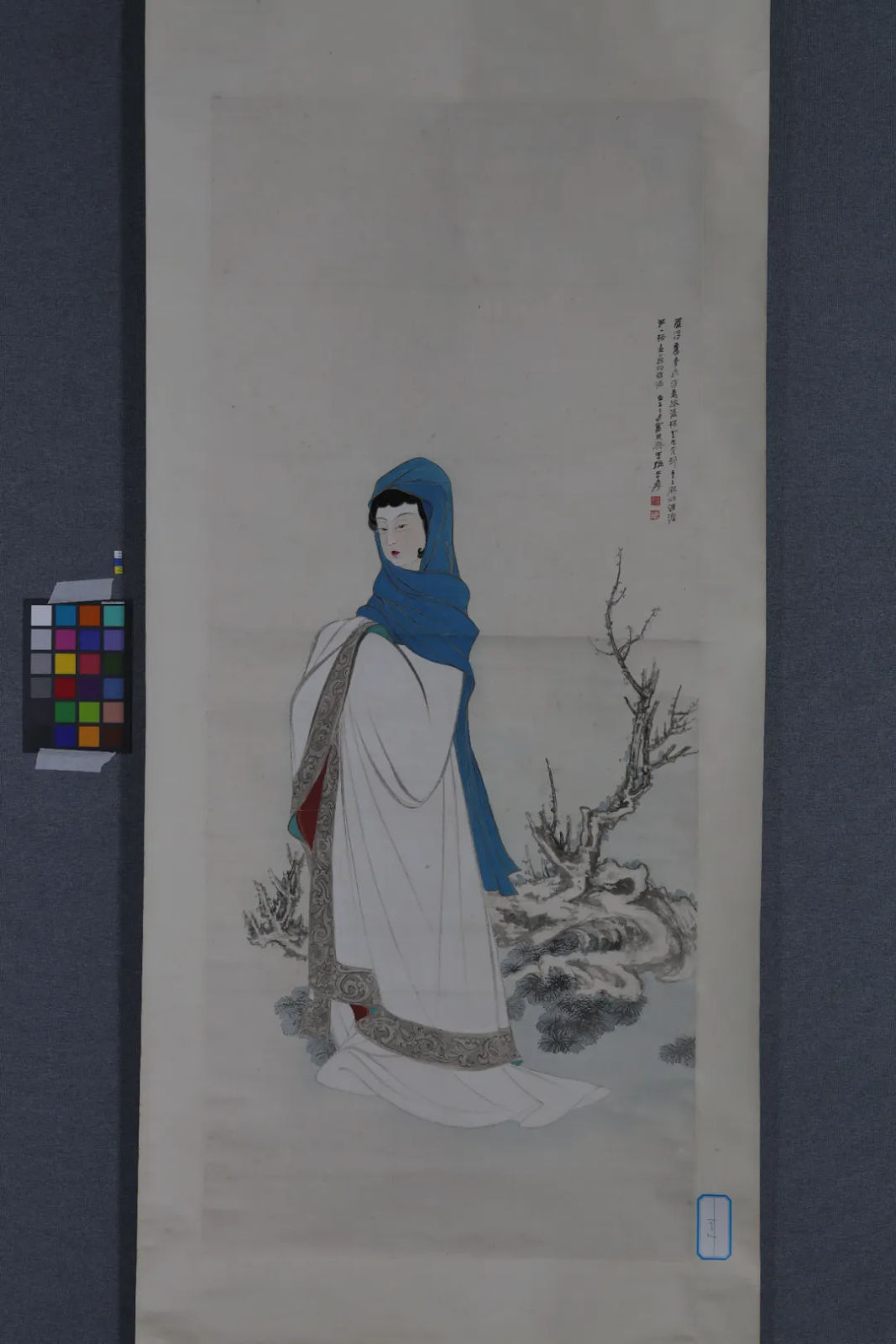“Butterflies in Love”: A Virtual Exhibition of Women’s Artifacts at the Anyang Museum
- May 18, 2025
- 12:13 pm
Celebrating International Women’s Day 2025
Spring is in full bloom, and everything is growing. In honor of International Women’s Day, the Anyang Museum is showcasing a selection of artifacts related to women from its collection. These artifacts, spanning pottery, porcelain, calligraphy, and painting, offer a glimpse into the lives and aesthetic sensibilities of women in ancient times. Join us as we admire these treasures that bear the mark of women’s presence in history.
Part 1: “Butterflies in Love” – A Virtual Exhibition of Women’s Artifacts
01. Han Dynasty Painted Gray Pottery Female Figure

This figure features a round face, straight eyebrows, flat eyes, a straight nose, and a small mouth. She is dressed in a long robe with crossed lapels and wide sleeves, her hands clasped in front of her abdomen. Her long braid hangs down her back, and the hem of her robe trails the ground, with the skirt flaring out in a trumpet shape. The figure has a slender build, graceful lines, and balanced proportions. Her expression is dignified and serene, embodying the typical characteristics of Han Dynasty pottery figures.
02. Sui Dynasty Unglazed Female Dancer Figure

This figure stands upright, with her hair coiled on top of her head and a round comb inserted at the back. She has a long neck, full shoulders, and one of the figures holds a fan to cover her face while the other three dance gracefully. They are all dressed in red, narrow-sleeved, short-skirted robes, with the sleeves reaching to their wrists and long ribbons tied at the chest, hanging down the front. The skirts reach the ground.
03. Sui Dynasty Unglazed Horseback Riding Figure

The horse stands upright, its mouth holding a red bit. The horse is adorned with bridle bells, necklaces, saddle, and mudguards. A woman sits astride the horse, with black hair and red lips. Her hair is combed up and coiled on top of her head. She wears a tight-fitting inner garment and a crossed-collar, right-lapel, narrow-sleeved shirt and wide-legged trousers on top. The shirt and trousers are both decorated with red wide bands. Her left hand and right arm are missing.
04. Tang Dynasty Silver-Covered Gilded Treasure Flower Copper Mirror

This mirror is octagonal with a round knob. The knob is decorated with eight connected curved branches of entwined flowers. The back of the mirror is covered with silver, and the silver surface is decorated with raised treasure flower patterns. The patterns are centered on the knob, with stems and leaves intertwining and flowers blooming in full splendor, covering the entire back of the mirror. The treasure flower patterns on the silver cover are highlighted with gilding. Testing has revealed that the gilded parts contain about 70% gold, and the silver cover contains about 90% silver. The silver cover is 0.17 centimeters thick and weighs 28 grams. This mirror is thick and heavy, beautifully crafted, with luxurious decorations and intricate patterns. It showcases the aesthetic preferences and artistic taste of the Tang Dynasty, and provides valuable material for studying Tang Dynasty mirror-making techniques and decorative art.
05. Qing Dynasty Gilded Bat Patterned Copper Mirror with Handle

This copper mirror is round with a long handle. The top of the handle has an ivory ox horn hook that supports the round mirror. The back of the mirror is decorated with four gilded butterflies about to fly, four flying bats, and clouds between the bats. The edge is decorated with a circle of hooked lotus patterns and a narrow border. This piece is beautifully crafted and is a fine example of Qing Dynasty copper mirrors.
06. Qing Dynasty Silver Flower Crown

This flower crown is made of silver and is semi-circular. It is decorated with flowers and butterflies using the filigree technique, with tassels hanging down. It is beautifully decorated and finely crafted, and was likely used by women during weddings.
Flower crowns, commonly known as phoenix crowns, were originally ceremonial crowns worn by noble women in ancient times. They originated in the Han Dynasty and were developed in the Sui and Tang Dynasties. They were included in the crown and clothing system during the Song Dynasty, and were further developed in the Ming and Qing Dynasties, forming the “phoenix crown and phoenix robe” system, which also influenced the common people. The common people borrowed this name, and women wore phoenix crowns and phoenix robes during their weddings, becoming a unique example in Chinese clothing culture.
Flower crowns, commonly known as phoenix crowns, were originally ceremonial crowns worn by noble women in ancient times. They originated in the Han Dynasty and were developed in the Sui and Tang Dynasties. They were included in the crown and clothing system during the Song Dynasty, and were further developed in the Ming and Qing Dynasties, forming the “phoenix crown and phoenix robe” system, which also influenced the common people. The common people borrowed this name, and women wore phoenix crowns and phoenix robes during their weddings, becoming a unique example in Chinese clothing culture.
07. Qing Dynasty Kangxi Period Imitation Ming Dynasty Chenghua Period Blue and White Four Beauties and Twelve Sons Patterned Porcelain Jar

This jar has a square lip, a straight mouth, full shoulders, a curved belly that narrows down to the base, a flaring foot, and a ring foot. The belly is decorated with blue and white women and children patterns, and the base has a blue and white inscription in three lines and six characters in running script, reading “Da Ming Chenghua Nian Zhi” (Made in the Chenghua Reign of the Great Ming Dynasty). The outside is decorated with blue and white double ring feet.
08. Qing Dynasty Pink Enamel Lady Patterned Porcelain Basin

The rim of the basin is decorated with a circle of pink enamel cloud head patterns. The inner belly is decorated with pink enamel flowers, fruits, and butterflies. The bottom of the basin is decorated with a pink enamel lady pattern, and the outer wall is decorated with red enamel bamboo leaf patterns. Both the inside and outside are glazed with white glaze.
Pink enamel is one of the most common types of overglaze decoration in ceramics. It is deeply influenced by literati painting. This basin has a unique shape and the patterns are painted in the boneless style, creating a sense of three-dimensionality. It is a precious piece of porcelain from the Tongzhi period of the Qing Dynasty, and is an important material for studying Qing Dynasty porcelain.
09. Qing Dynasty Yu Zhi Ding Lady Patterned Fan


This painting is on silk, a fan. It is painted in meticulous detail with heavy colors. Two women lean on a railing under a parasol tree, admiring the moon. The inscription reads: “Ding Mao Jiaping month, Guangling Yu Zhi Ding wrote.” It is stamped with a seal that reads “Shang Ji.” It was created in the 26th year of Kangxi (1687), when the artist was 41 years old.
Yu Zhi Ding (1647–?), Qing Dynasty, courtesy name Shang Ji, another name Shang Ji, also known as Shang Ji, art name Shen Zhai. He was from Jiangdu (present-day Yangzhou). During the Kangxi period, he served as a painter at Changchun Garden for his skill in painting. He learned from Lan Ying in his youth, and his paintings were in the style of the Song and Yuan Dynasties, eventually developing his own unique style. His portraits were mostly done in white outline, and his elegant and ancient style was the best of his time. Many portraits of famous people of the time were created by him.
10. Republic of China Period Zhang Daqian Figure Painting
Fan

This painting is on colored paper, a meticulous figure painting. Ma Gu stands with her head wrapped in blue silk and her body covered in a robe. Her hands are clasped in front of her chest, and behind her are a few branches of plum blossoms. The inscription reads: “The old dream of Luofu is the most dispelled, after the disaster, plum blossoms still have villages. Reunite with Ma Gu to talk about the vast ocean, a cup of spring dew, to whom should I warm it?” The signature reads: “Ren Wu February, Jia Xiao Qi wrote, Zhang Daqian loves.” Two seals: white “Zhang Ji” and red “Daqian Jushi.” This painting was created by Zhang Daqian in 1942.
Editor: Ma Jun

